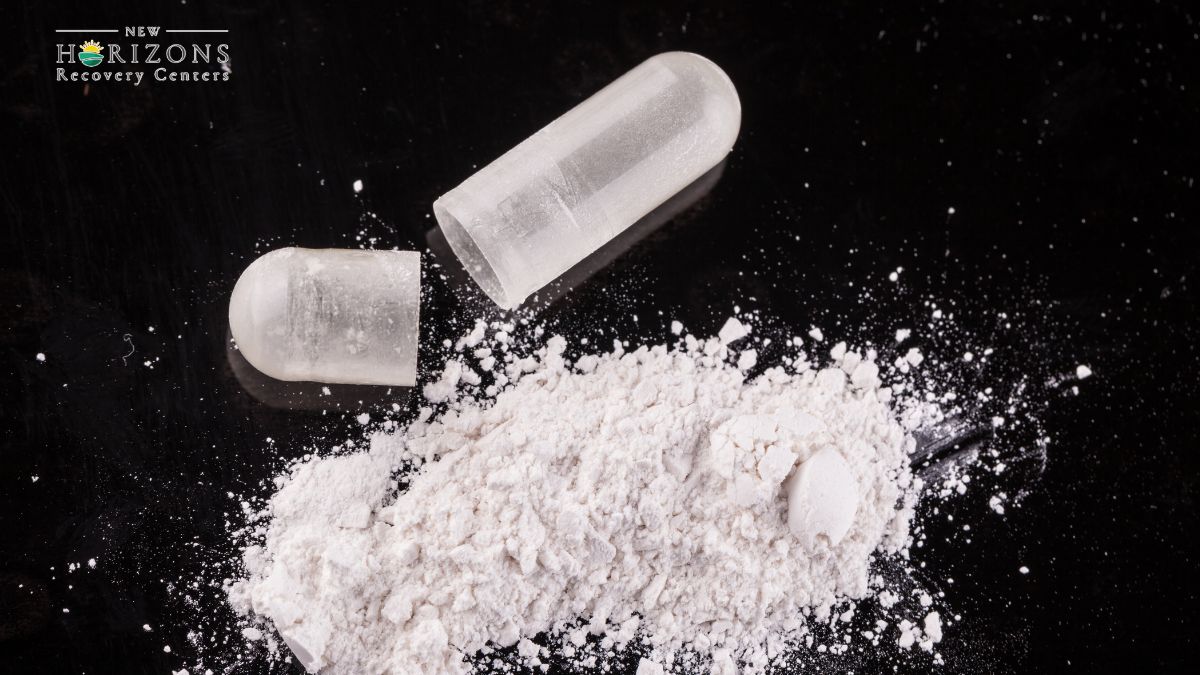Understanding Valacyclovir
Valacyclovir is an antiviral medication that is commonly used to treat conditions caused by the herpes virus, including cold sores, shingles, and genital herpes. It is an oral medication that is available in tablet form. When taken, valacyclovir is converted into acyclovir in the body, which actively works against viral infections.

Introduction to Valacyclovir
Valacyclovir is an FDA-approved medication that belongs to a class of drugs known as antivirals. It is a prodrug of acyclovir, meaning that it is converted into its active form, acyclovir, in the body. Valacyclovir is primarily used to treat herpes infections, but it does not cure the conditions. Instead, it helps to relieve the pain, discomfort, and itching associated with these infections and helps the sores heal faster [2].
Mechanism of Action
Once valacyclovir is ingested, it is rapidly absorbed in the gastrointestinal tract and converted into acyclovir in the liver. Acyclovir is the active drug that fights off viral infections caused by the herpes virus. It works by inhibiting the replication of the virus, preventing it from spreading and causing further damage. Acyclovir interferes with the viral DNA synthesis, disrupting the replication process and reducing the severity and duration of the viral infection.
The body eliminates valacyclovir and its active form, acyclovir, primarily through the kidneys. The majority of the drug leaves the body within 3 to 5 hours after administration, with the half-life of acyclovir being approximately 2.5 to 3.3 hours in adults with normal kidney function. It's important to note that the elimination process may vary depending on individual factors, such as kidney function and dosage [1].
Understanding the introduction and mechanism of action of valacyclovir provides a foundation for exploring its side effects, factors affecting its duration in the system, and its specific uses in the treatment of herpes infections.

Side Effects of Valacyclovir
Valacyclovir, like any medication, can have potential side effects. It's important to be aware of these side effects to make informed decisions regarding its use. In this section, we will discuss the potential long-term effects, impact on the liver and kidneys, and common side effects associated with valacyclovir.
Potential Long-Term Effects
Valacyclovir may cause long-term side effects that can persist even after stopping the treatment with the drug. These effects may include kidney problems or changes in thinking or behavior, such as confusion or hallucinations. It is important to consult with a healthcare professional if you experience any persistent or concerning symptoms while taking valacyclovir.
Impact on Liver and Kidneys
Valacyclovir can potentially affect the liver, leading to issues such as increased liver function tests and hepatitis. Symptoms of liver problems may include fatigue, weakness, loss of appetite, nausea, vomiting, abdominal pain, and dark urine. Regular monitoring of liver function may be recommended during valacyclovir treatment.
Regarding the kidneys, individuals with pre-existing kidney conditions or reduced kidney function should exercise caution when taking valacyclovir. The dosage may need to be adjusted to prevent further kidney damage. It is important to inform your healthcare provider about any kidney-related concerns or conditions before starting valacyclovir treatment.
Common Side Effects
In addition to potential long-term effects and impact on the liver and kidneys, valacyclovir can also cause common side effects. These side effects are generally mild and may include:
It's important to note that not everyone will experience these side effects, and the severity and occurrence may vary from person to person. If you have concerns about the side effects of valacyclovir, it is best to discuss them with your healthcare provider.
Understanding the potential long-term effects, impact on the liver and kidneys, and common side effects of valacyclovir is essential when considering this medication for the treatment of various conditions. It is always recommended to consult with a healthcare professional for personalized advice and guidance based on your specific medical history and needs.

Factors Affecting Valacyclovir
Dosage and Frequency
The duration of time that Valacyclovir, an antiviral medication, stays in the system can be influenced by various factors. One crucial factor is the dosage and frequency of the medication. Higher doses and more frequent intake can result in a longer elimination half-life, which is the time it takes for the body to eliminate half of the drug. However, it's important to note that the body typically processes Valacyclovir in a linear fashion, meaning that doubling the dose does not necessarily double the time it takes for the body to eliminate the drug.
Kidney Function
Kidney function plays a significant role in the clearance of Valacyclovir from the body. The kidneys are responsible for filtering and excreting drugs from the system. For individuals with kidney problems or a history of kidney disease, Valacyclovir may not be cleared effectively, leading to increased drug levels and more side effects. In such cases, a lower dosage may be prescribed to minimize the risk of adverse effects. It is crucial to inform your healthcare provider about any kidney issues or history of kidney disease before starting Valacyclovir treatment [4].
Drug Interactions
Interactions with other medications can also affect how long Valacyclovir stays in the system. It is important to inform your healthcare provider about all medications, vitamins, or herbs you are taking to prevent potentially harmful interactions. Certain drugs may interfere with the metabolism or excretion of Valacyclovir, leading to prolonged drug levels in the body. Your healthcare provider can assess potential drug interactions and adjust the dosage or provide alternative treatment options if necessary.
Considering these factors is essential for understanding the duration of Valacyclovir in the system. It is always recommended to follow the prescribed dosage and frequency, inform your healthcare provider about any kidney issues, and disclose all medications you are taking to ensure safe and effective treatment. Monitoring kidney function and discussing any concerns or changes in health with your healthcare provider is crucial for long-term use of Valacyclovir [1].
Valacyclovir Administration
When it comes to the administration of valacyclovir, there are a few key considerations to keep in mind to ensure its effectiveness. These include the best timing for effectiveness, dosage instructions, and administration guidelines.
Best Timing for Effectiveness
The timing of when you start taking valacyclovir can significantly impact its effectiveness in treating certain conditions. For example, if you are using valacyclovir to treat shingles or genital herpes, it works best when started within 48 hours after the first symptoms appear. For recurrent outbreaks of genital herpes, starting valacyclovir within 24 hours after symptoms begin is optimal. If you are using valacyclovir to treat chickenpox, it is best to start taking it as soon as possible after the first sign of the chickenpox rash appears, usually within one day.
Dosage Instructions
To ensure the effectiveness of valacyclovir, it is crucial to follow the dosage instructions provided by your doctor or healthcare provider. Valacyclovir is typically taken orally, with or without food. It is important to take the medication exactly as prescribed and not to miss any doses. Even if your symptoms begin to improve after a few days, it is essential to continue taking valacyclovir for the full duration of the treatment as prescribed by your healthcare professional. Do not increase the dosage or use valacyclovir for a longer period than recommended.
Administration Guidelines
Valacyclovir can be taken with meals or on an empty stomach, as per personal preference. If you experience any gastrointestinal discomfort while taking valacyclovir, you may find it helpful to take the medication with food. It is essential to stay hydrated and drink plenty of water while taking valacyclovir to ensure optimal absorption and effectiveness.
Remember, it is crucial to consult with your healthcare provider for specific instructions regarding the administration of valacyclovir. They will consider your individual condition and provide tailored guidance to achieve the best results.
By following the recommended timing, dosage instructions, and administration guidelines, you can maximize the effectiveness of valacyclovir in treating conditions such as shingles, genital herpes, or chickenpox. It is important to complete the full course of treatment as prescribed to ensure the infection is properly cleared.
Duration of Valacyclovir in the System
Understanding how long valacyclovir, the active drug in Valtrex, stays in the system is important for individuals undergoing treatment. Let's explore the elimination process, the effects of renal impairment, and the necessary monitoring and safety measures associated with valacyclovir.
Elimination Process
In individuals with normal kidney function, the majority of acyclovir, the active drug in valacyclovir, is eliminated from the body within 3 to 5 hours after administration. The half-life of acyclovir is approximately 2.5 to 3.3 hours in adults with normal kidney function. Most of the valacyclovir drug and its metabolites should be eliminated from the system within 13.75 to 18.15 hours after the last dose in individuals with normal kidney function.
Effects on Individuals with Renal Impairment
Patients with impaired kidney function may experience delays in the elimination of valacyclovir from the system. In individuals with end-stage renal disease (ESRD), the half-life of valacyclovir can increase from three hours to 14 hours. Regular hemodialysis sessions are often necessary for effective drug clearance. During a single hemodialysis session, approximately 33% of valacyclovir can be removed from the system [5].
It's important to note that patients with renal impairment are more susceptible to valacyclovir-associated neurotoxicity (VAN), a rare adverse reaction affecting the central nervous system. VAN can manifest as agitation, hallucinations, and confusion. Patients with renal impairment should be closely monitored for any signs of neurotoxicity during valacyclovir treatment.
Monitoring and Safety Measures
To ensure the safe and effective use of valacyclovir, monitoring is essential. Regular kidney function tests should be conducted to assess the clearance of valacyclovir and its metabolites from the system. Monitoring can help healthcare professionals determine the appropriate dosage and frequency of valacyclovir administration, especially in individuals with renal impairment.
For patients undergoing hemodialysis, the half-life of acyclovir during a dialysis session is approximately 4 hours. About one-third of acyclovir can be removed by dialysis during a 4-hour session. This information is particularly relevant for patients with impaired kidney function who may require hemodialysis.
It's important to discuss any pre-existing medical conditions or medications with a healthcare professional before starting valacyclovir treatment. This ensures that the appropriate safety measures are taken, and any potential drug interactions or risks are identified.
In conclusion, the duration of valacyclovir in the system varies depending on kidney function. Individuals with normal kidney function can expect valacyclovir to be eliminated within 13.75 to 18.15 hours after the last dose. However, patients with renal impairment may experience delays in elimination and require hemodialysis for effective drug clearance. Close monitoring and adherence to safety measures are crucial to ensure the safe and effective use of valacyclovir.
Valacyclovir for Herpes Treatment
Valacyclovir is a medication commonly used for the treatment of various herpes infections. Understanding its uses, treatment guidelines, and long-term considerations is crucial for individuals seeking effective management of their condition.
Uses of Valacyclovir
Valacyclovir is prescribed for both short-term and long-term treatment purposes. It is commonly used for the following conditions:
For long-term management, valacyclovir can be used to prevent genital herpes outbreaks and reduce the risk of transmission to sexual partners. It is important to take valacyclovir as prescribed by your healthcare provider to ensure its effectiveness and mitigate potential risks. More information on valacyclovir can be found on Healthline.
Treatment Guidelines
To maximize the benefits of valacyclovir, it is essential to adhere to the recommended treatment guidelines. Taking the medication as directed by your healthcare provider helps ensure optimal outcomes and minimizes the risk of complications. It is important to complete the full course of treatment even if symptoms improve before the prescribed duration.
Following proper treatment guidelines includes:
By adhering to the treatment guidelines, you can effectively manage your herpes infection and minimize the risk of recurrence or complications.
Long-Term Considerations
Valacyclovir is generally considered safe for long-term use, but it is important to monitor your health closely and communicate any concerns with your healthcare provider. Long-term considerations may include:
To ensure the safety and effectiveness of valacyclovir for long-term herpes management, it is crucial to maintain a collaborative relationship with your healthcare provider and follow their guidance. Regular check-ups and open communication will help ensure that your treatment plan remains appropriate for your specific needs.
Valacyclovir is a valuable medication for the treatment and prevention of various herpes infections. By understanding its uses, following treatment guidelines, and considering long-term factors, individuals can effectively manage their condition and improve their quality of life.
References
[2]:
[3]:
[4]:
[5]:





-ink.jpeg)
-ink.jpeg)
